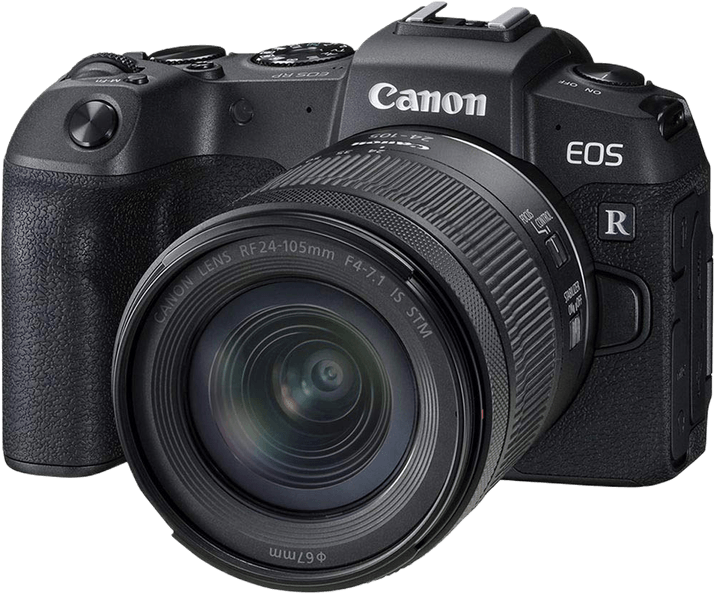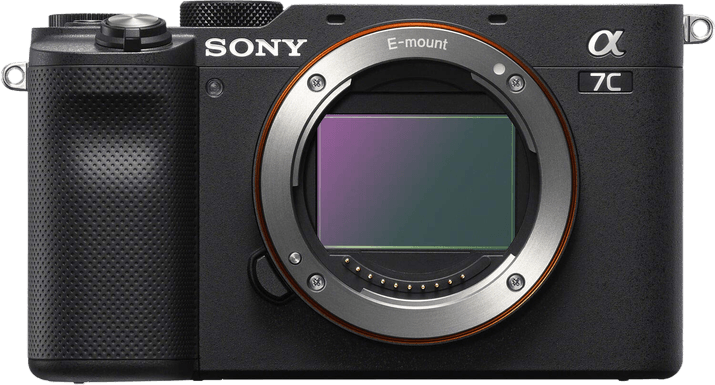Canon EOS RP vs Sony a7C Comparison
Canon EOS RP

Sony a7C

The Sony a7C takes the lead with a score of 78/100, while the Canon EOS RP scores 65/100. Both mirrorless cameras share similar features, such as their release years (2019 for Canon and 2020 for Sony), and their camera types. The Sony a7C has a higher launch price at $1799, compared to the Canon EOS RP at $1300.
The winning Sony a7C is more compact, measuring 124 x 71 x 60mm, and weighs 509g (1.12lbs). This makes it more portable and convenient for photographers on the go. On the other hand, the Canon EOS RP is slightly larger at 133 x 85 x 70mm and lighter at 440g (0.97lbs), which may appeal to those who prefer a lighter camera.
Considering the specifications, the Sony a7C is the better camera due to its compact size and higher score, while the Canon EOS RP is a more affordable and lighter option.
Canon EOS RP vs Sony a7C Overview and Optics
The Sony a7C outperforms the Canon EOS RP in optics with a score of 80/100 compared to the Canon’s 67/100. Both cameras share certain specifications, such as having a CMOS sensor, full-frame sensor size, and similar megapixels (26 for Canon and 24.2 for Sony).
The Sony a7C’s higher score is due to its faster shooting speed of 10 frames per second (fps) compared to the Canon EOS RP’s 5 fps. This enables the Sony a7C to capture fast-moving subjects more effectively. Additionally, the a7C boasts a higher DXOMARK score for its sensor, 95 versus the Canon’s 85, which translates to better overall image quality. The Sony a7C also offers image stabilization, a feature lacking in the Canon EOS RP. This allows the a7C to produce sharper images in low-light situations or when using slower shutter speeds.
On the other hand, the Canon EOS RP has a higher megapixel count (26 vs. 24.2), which may provide slightly more detailed images. However, this difference is not significant enough to outweigh the advantages of the Sony a7C.
Both cameras have their respective lens mounts, with the Canon EOS RP using the Canon RF mount and the Sony a7C using the Sony FE mount. This factor depends on user preference and the availability of compatible lenses.
Considering the faster shooting speed, higher DXOMARK sensor score, and image stabilization offered by the Sony a7C, it is the superior choice in terms of optics. While the Canon EOS RP has a slightly higher megapixel count, it does not provide enough advantage to surpass the Sony a7C.
Canon EOS RP vs Sony a7C Video Performance
The Canon EOS RP and the Sony a7C both have a video score of 70/100, indicating that their video capabilities are equally matched. These cameras share several common video specifications, including 4K max video resolution, 3840 x 2160 max video dimensions, and built-in time-lapse functionality. However, there are differences in their video frame rates and specific features that set them apart.
The Sony a7C has a higher max video frame rate of 30fps, compared to the Canon EOS RP’s 25fps. This means that the a7C can capture smoother video with more frames per second, which is useful for fast-moving subjects or action scenes. This advantage gives the Sony a7C an edge over the Canon EOS RP when it comes to capturing high-quality video with smoother motion.
On the other hand, the Canon EOS RP does not have any significant advantages in video capabilities over the Sony a7C. Both cameras share the same video score and most of the same specifications. The only notable difference is the lower max video frame rate, which puts the EOS RP at a slight disadvantage compared to the a7C.
Given these factors, the Sony a7C and Canon EOS RP are evenly matched in terms of video capabilities, with the a7C having a slight advantage due to its higher max video frame rate. Both cameras offer 4K video resolution and built-in time-lapse functionality, making them suitable choices for a variety of video projects. However, for users seeking smoother video with a higher frame rate, the Sony a7C is the better option.
Canon EOS RP vs Sony a7C Features and Benefits
The Sony a7C wins in the feature comparison with a score of 81/100, while the Canon EOS RP scores 70/100. Both cameras share several common specifications, such as a 3-inch touchscreen, flip screen, absence of GPS, and the presence of WIFI and Bluetooth.
The Sony a7C outperforms the Canon EOS RP in terms of screen resolution, offering 921,600 dots compared to the EOS RP’s 1,040,000 dots. This higher screen resolution provides a clearer and sharper image display, which can be beneficial for photographers when reviewing their shots or composing images.
On the other hand, the Canon EOS RP does not have any distinct advantages over the Sony a7C in terms of features. Both cameras have the same screen size, touchscreen capabilities, flip screen, and connectivity options. This means that the EOS RP does not offer any unique features that make it stand out from the a7C.
In terms of features, the Sony a7C is the superior camera, offering a higher screen resolution, which allows for better image display and composition. The Canon EOS RP, while still a capable camera, does not have any standout features that give it an edge over the a7C in this comparison. Therefore, for photographers seeking a camera with better features, the Sony a7C is the clear winner.
Canon EOS RP vs Sony a7C Storage and Battery
The Sony a7C edges out the Canon EOS RP in storage and battery performance, scoring 45 out of 100 compared to the Canon’s 29. Both cameras share similarities in storage options, with both offering a single memory card slot and compatibility with SD, SDHC, and SDXC (UHS-II) cards. Additionally, both models support USB charging.
The Sony a7C outperforms the Canon EOS RP in battery life, delivering 740 shots per charge compared to the Canon’s 250 shots. The a7C uses the NP-FZ100 battery, which contributes to its superior battery performance.
Despite the lower score, the Canon EOS RP still provides users with adequate storage and battery capabilities for casual or beginner photographers. However, for those who prioritize longer battery life and more extensive shooting sessions, the Sony a7C is the clear winner in this comparison.
Canon EOS RP vs Sony a7C – Our Verdict
Are you still undecided about which camera is right for you? Have a look at these popular comparisons that feature the Canon EOS RP or the Sony a7C:

